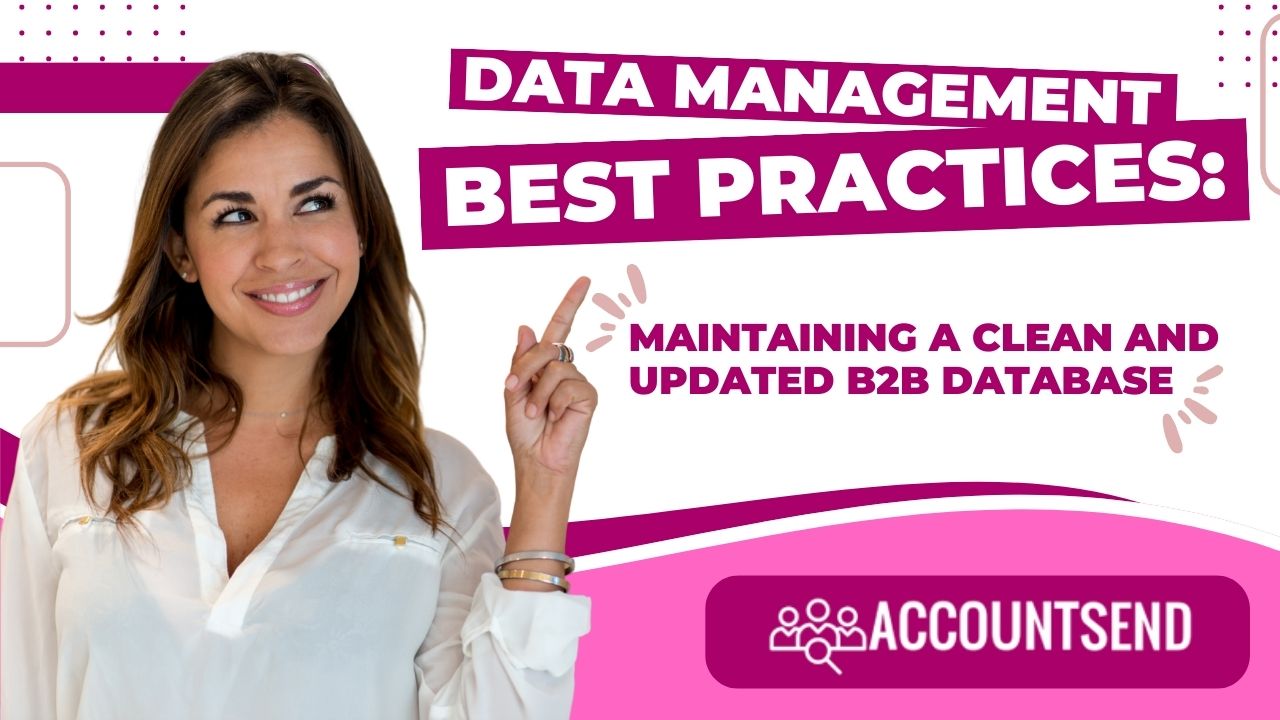Data Management Best Practices: Maintaining a Clean and Updated B2B Database
Article by Jonathan Bomser | CEO | AccountSend.com

DOWNLOAD THE DATA MANAGEMENT INFOGRAPHIC HERE
Regular Data Cleaning
Data hygiene is crucial for maintaining contact data accuracy. Regularly clean your B2B contact data by removing redundant, outdated, or invalid information. Implement a routine data cleaning schedule to ensure your sales leads database is always current and accurate.
Implement CRM Integration
Customer Relationship Management (CRM) systems can streamline your data management process. With CRM integration, you can easily manage, organize, and update your B2B lead generation database. It also provides the tools necessary for efficient market segmentation, lead scoring, and sales pipeline management.
Enhance Data with Third-Party Information
Third-party B2B data providers can enrich your existing database with additional insights. This could include information such as industry trends, specific niche industries, or emerging markets. Enriched data can lead to more targeted and effective account-based marketing strategies.
Validate Contact Information
Maintaining contact data accuracy is essential for effective sales outreach and email marketing. Regularly validate email addresses, phone numbers, and other contact information. Verification ensures that your outreach efforts reach the right decision-makers.

Foster a Data-driven Culture
Encourage your team to value and understand the importance of clean data. Promote practices such as entering new data correctly, regularly updating contact info, and reporting any discrepancies. A data-driven culture fosters responsibility and active participation in data management.
In conclusion, maintaining a clean and updated B2B database is a continuous process. It requires regular data cleaning, CRM integration, data validation, and a data-driven culture. By implementing these best practices, you can maximize your database's effectiveness and drive your small business marketing or global business expansion efforts.
SALES AND BUSINESS DEVELOPMENT
10 ways to Say goodbye to stagnant sales with these powerful tactics
From Snooze to Sales-palooza: Unleash Your Sales and Lead Generation Superpowers!
Transform your sales game with these insider tips
How can AccountSend.com increase your sales, lead generation and business development efforts?
Accelerate your business growth with these insider secrets
10 ways to grow your business using AccountSend.com B2B decision maker data
Don't miss out on these game-changing sales tactics
Unleashing Your Sales Potential: Exploring Targeted Lead Generation
Navigating Tough Times: 10 Strategies to Boost Sales When The Going Gets Rough
LEAD GENERATION
Crack the Code and Unleash Success: The Ultimate Guide to B2B Lead Generation Success and Magic!
Ignite Your Growth: Unleash the Power of Lead Generation to Skyrocket Your Client Base!
Boost your bottom line with these lead generation strategies
Unleash the Power of Lead Generation: 10 Proven Formulas That Deliver Results
B2B CONTACT DATABASE
How to Build an Effective B2B Contact Database
The Benefits of Using a B2B Contact Database for Sales and Marketing
Effective strategies to gain new clients using database lists from AccountSend.com
How to Measure the Success of Your B2B Contact Database
INDUSTRIES INFORMATION

